Hold that Note
Derek Fordjour’s immersive “Nightsong” turns looking into listening—and listening into seeing
Individual works reward attention, but thoughtful curation—works set in conversation with each other—multiplies their power. Layer in strategic lighting, music, live performers, and the experience rises to a new level. That’s what I encountered this week in Derek Fordjour’s Nightsong at David Kordansky Gallery in Los Angeles.
Fordjour’s approach: social stakes and philosophical throughline
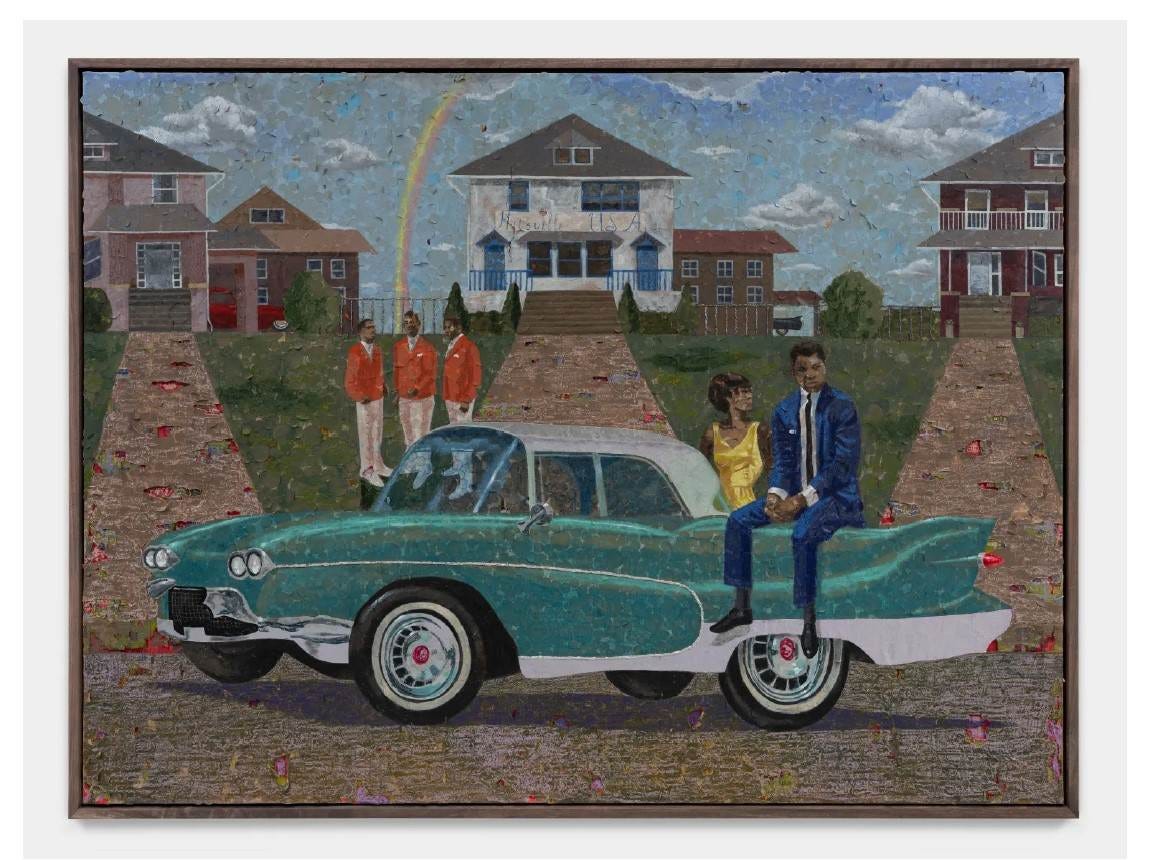
At heart, Nightsong is an ethics of listening. Fordjour, a noted 21st century Black artist, addresses Black music in America as a living method for navigating power—how people make sound, make do, and make meaning under constraint. The exhibition’s “covers” room lays out his stance with precision. By “covering” paintings the way musicians cover songs, he flips a history of erasure—when major labels remade regional Black hits (using white singers)—and reframes homage as pedagogy: it’s taught, learned, and remixed in public, revealing and empowering the past.
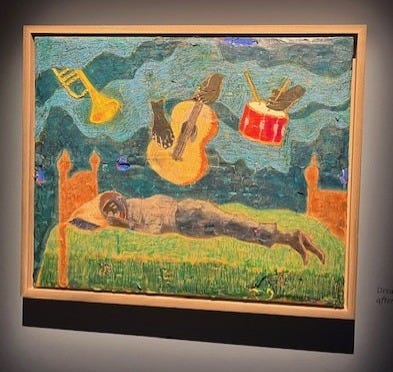
Dreamscape (after Palmer Hayden) greets you in the “covers” entrance hall, where homages to artists hang like sleeve notes for a living archive. Deploying a common recipe—acrylic, charcoal, cardboard, and oil pastel over newspaper on canvas, in Dreamscape, the artist shows a resting figure supine beneath a floating trumpet, guitar, and drum, as if a private chorus has slipped loose from the mind. Like a musical cover, Fordjour, copies the essential elements of the noted Harlem Renaissance artist, Palmer Hayden.
The choice to “cover” Palmer Hayden matters. Hayden’s own narrative scenes often elevate everyday Black life through lucid storytelling and emblematic objects. By retaining the essentials—a resting dreamer and airborne instruments—Fordjour honors that clarity, yet he also translates it into his vocabulary of abrasion and exposure. Tucked newsprint peeks through the paint skin, literally suturing public discourse (the printed page) to private interiority (the dream). In a show concerned with who gets heard and how, Dreamscape proposes listening as an inward practice first; the chorus we later meet in the darkened galleries begins as a hum inside one body.
Media as method: collage, light, architecture, performance
Fordjour extends his collage ethos from canvas to room. Reflective foils, textured fabrics, kinetic elements, and minimal, directional lighting catch and scatter sound, turning surfaces into resonant chambers. Architectural interventions—platforms, thresholds, shadowed corridors—set the body’s tempo. The result is spatial collage: materials, light, and movement layered and abraded until new meanings show through, the way a chorus lifts a melody.
The show develops what Fordjour calls “the artifice of night”—architecture swaddled in darkness, just enough light to orient the body—so you feel the risk and refuge built into Black expressive spaces, as you move through the exhibit rooms.
Music as structure, art as score
The gallery becomes a giant music box in the dark. Evening hours, a roving sound cart, and live singers performing a song-cycle turn circulation into procession. As you pass from small stages to mezzanines to a hush-dark thicket, the sonic arc maps history—from survival songs to chart harmonies—while the paintings and sculptures answer like instruments.
No two passages are the same; the show is performed as much as it is installed.
Sculptures punctuate the score—figures and forms built from a chorus of materials: wood and steel beside resin and fiberglass, rhinestones glinting against iron and wax. They read like reliquaries for rhythm and memory.
Fermata anchors this ensemble. A seated pianist leans into a pause, the instrument subtly aglow as if lit from within.
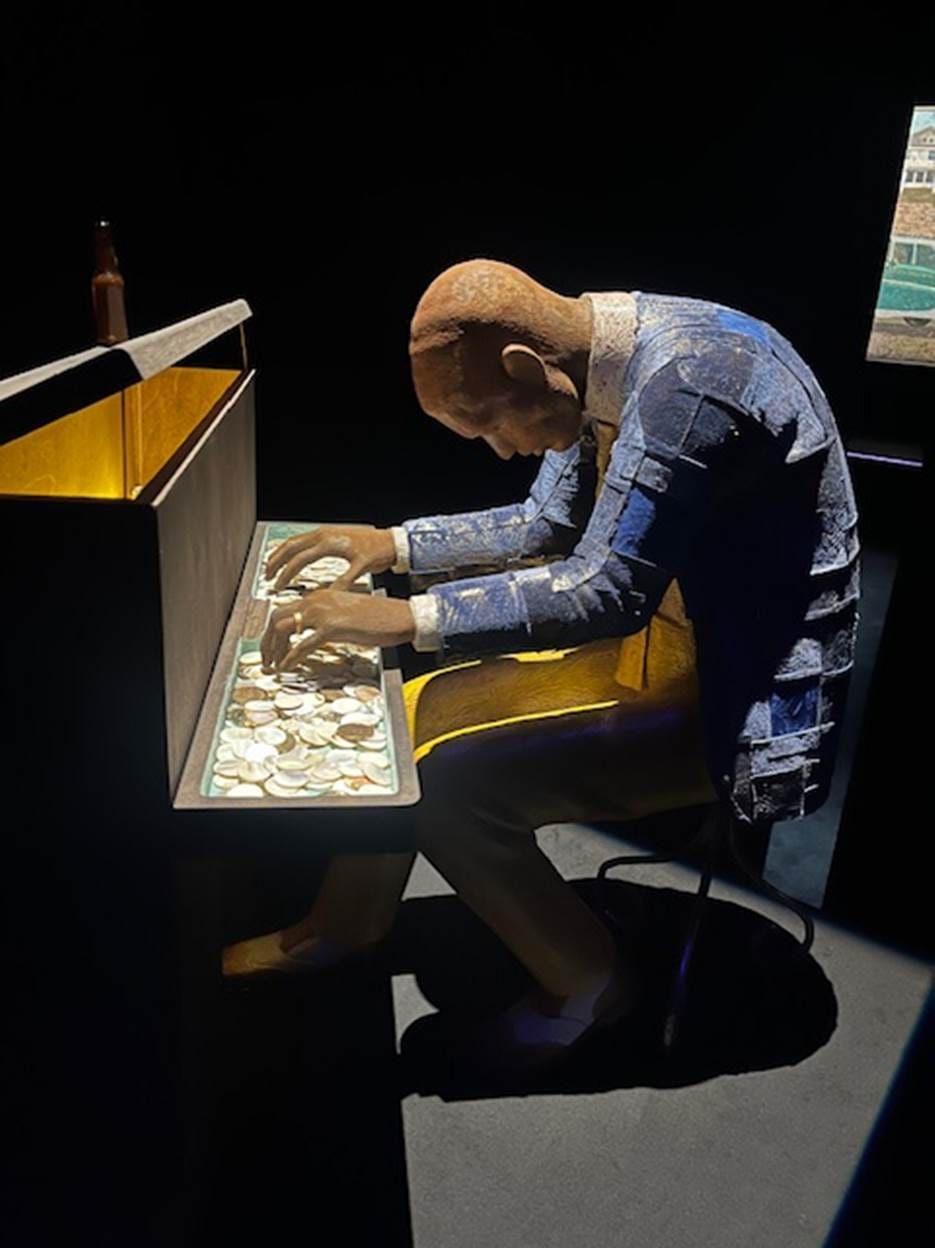
The title’s musical sign—“hold”—becomes a gesture of sustenance: breath gathered, time stretched. Layered materials (from dense industrial elements to iridescent inlays) make the figure both monumental and tender. You feel the weight of practice, the ache of repetition, the solace of return. It’s a sculpture about endurance—how a body becomes a vessel for sound, how a pause can carry a lifetime.
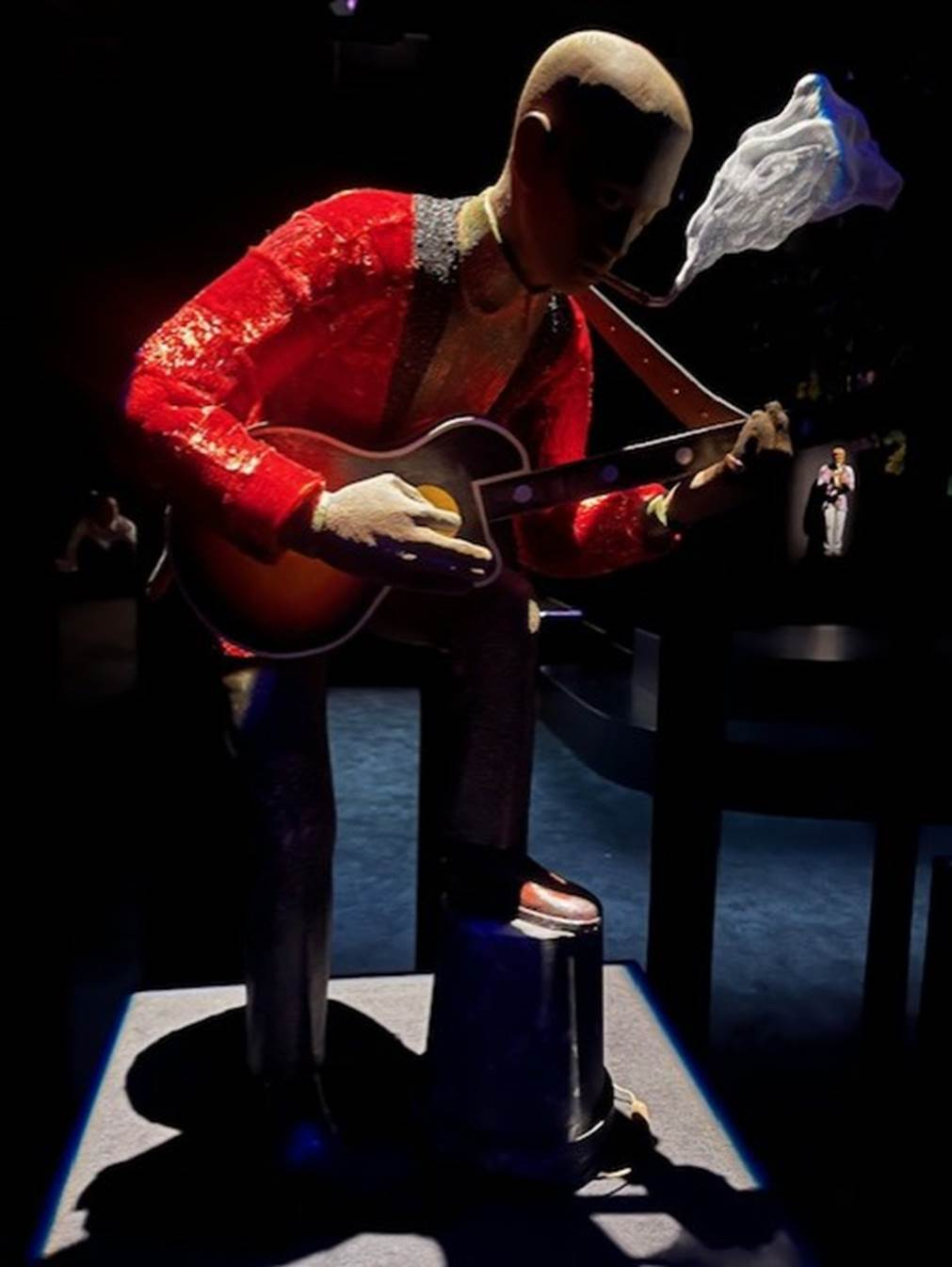
Paintings: a layered technique
Fordjour builds his pictures in layers. Are they paintings or sculptures, or both? He starts with acrylic, lays down corrugated cardboard to carve channels for paint, wraps the surface in crosshatched newspaper, then tears back through the paper skins—repeating the cycle until a tough, scaly ground emerges. That physical crust is exactly what appears in the details below.
A percussionist’s hands hover over a drum whose head is literally sheets of newsprint. Printed text peeks through the pigment so rhythm becomes readable—sound as language, history as substrate. The field is tiled with small circular “scales” that catch the raking light; depending on your angle, the figure either surfaces or slips back into the night.
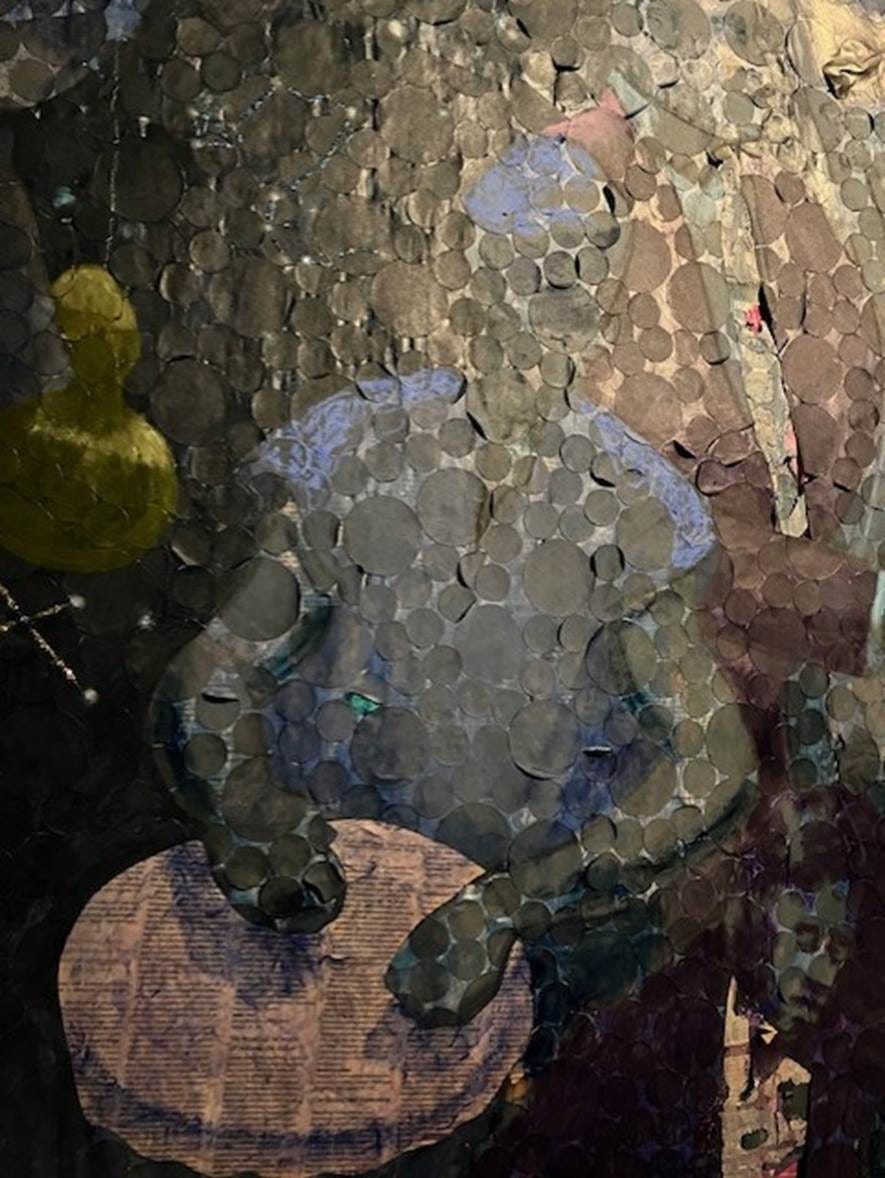
Another figure’s torso is stitched from violets and blues, with pink and cream shards flashing like cut paper. Where the skin has been abraded, earlier layers flare up, so color feels sung rather than simply applied. The sequined effect—matte to luminous in a step—links the paintings to the show’s lighting design and to stage costuming.
Conclusion: an embodied nocturne
Merleau-Ponty reminds us that perception is a not just about seeing, but involves the whole body, in all is physicality and sensory connections. Nightsong insists on that truth. You don’t merely look; you move—eyes adjusting to darkness, ears catching harmonies, feet learning the architecture’s rhythm. You ascend and descend, lean in and step back, breathe with a sustained note. Image, sound, and structure wrap around you until seeing and hearing, looking and listening, spectator and chorister begin to blur. In that blurring, the show becomes what its title promises: a night song—an experience that envelops and embraces, and keeps resonating after you step back into the street.


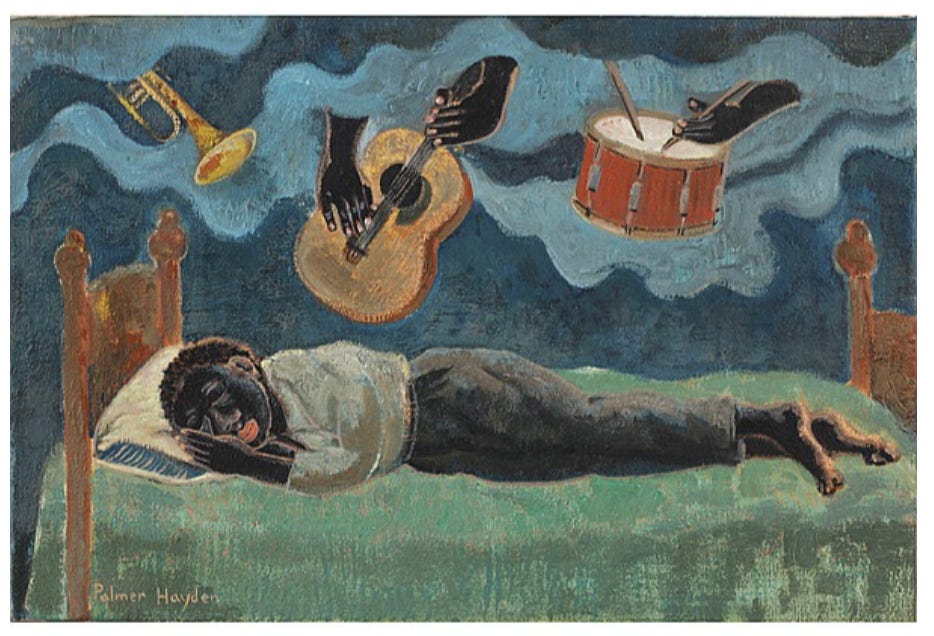
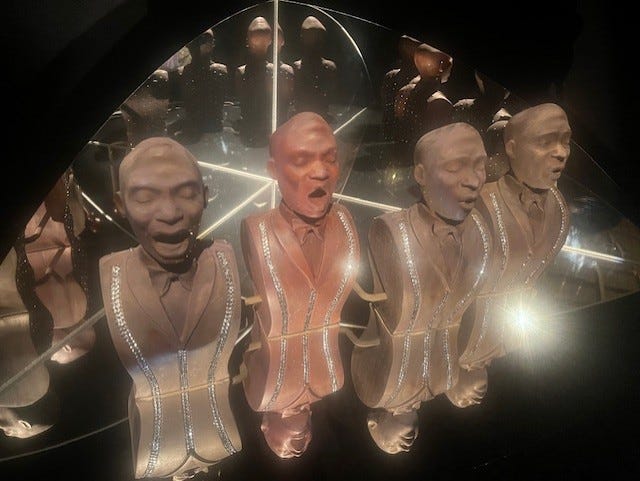
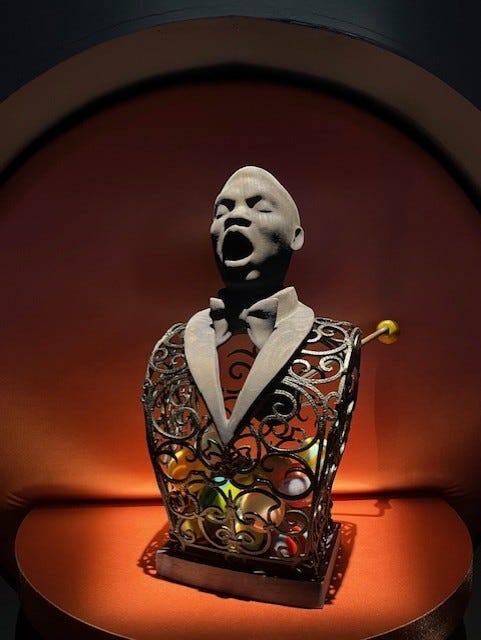
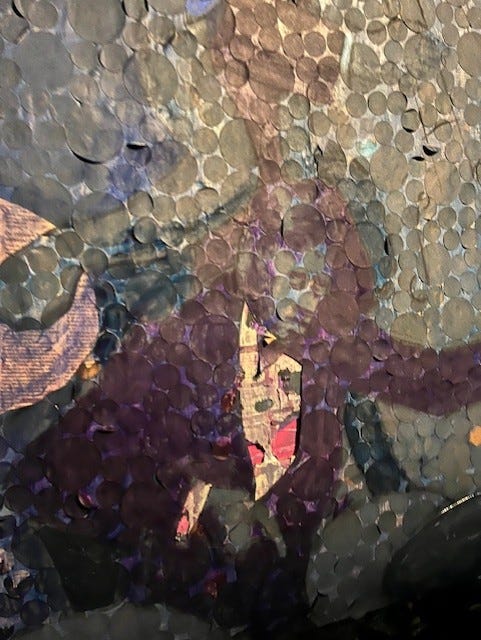
Wow...this is so evocative. Its like the works are singing!
I particularly like the Dreamer...What a beautiful image of the instruments peering down from the clouds as he sleeps.